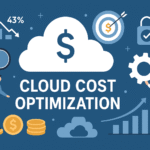A cloud native application is in particular designed from the ground up to take gain of the elasticity and allotted nature of the cloud. To higher understand what cloud native utility is its satisfactory to start with what its not a conventional monolithic software.
Monolithic applications feature as single unit often with custom built operation structures middleware & language stacks for every software. Most scripts and processes are also cause built for the construct take look at & deployment. Overall this utility architecture creates close dependencies making it more tough to trade test set up & function systems as they develop over the years. What starts out as simple to design and deploy quickly will become complicated difficult to evolve & tough to operate.
By comparison cloud local applications make the maximum of current infrastructures dynamic allotted nature to acquire more velocity agility scalability reliability & cost performance.
Cloud local applications are typically damaged down into more than one self contained services through the use of technologies and methodologies namely DevOps continuous transport and continuous integration bins microservices & declarative APIs. This enables teams to deploy and scale components independently so that it will make updates restoration issues & supply new features without any service interruption.
Cloud native pillars

There are numerous ways to create cloud native architecture however the purpose is always to increase software program transport pace and provider reliability and to increase shared ownership among software program stakeholders. Still the basics of cloud native architectures are based on 5 middle pillars:
Microservices: Almost all cloud architectures are based on microservices however the key advantage they deliver is composability—breaking down an software into set of smaller light weight services that can without problems be composed and linked to each different via software programming interfaces (APIs). For instance an ecommerce application might be composed of specific carrier for the buying cart another for price & every other one that communicates with the again end about stock control. Composability also allows groups to swap and re compose additives to meet new enterprise requirements with out disrupting some other part of the application.
Containers and orchestration: Containers are lightweight executable additives that include all the factors wanted—including app source code and dependencies—to run the code in any environment. Containers supply workload portability that supports “construct as soon as run everywhere” code making improvement and deployment drastically less difficult. They also assist to reduce the chance of friction among languages libraries & frameworks due to the fact they can be deployed independently. This portability and flexibility makes packing containers best for constructing microservices architectures.
Container orchestration is also essential as the number of microservices grows to help control bins so that it will run smoothly as an application. container orchestration platform like Kubernetes affords oversight and manage of in which and how bins run repair any disasters & balance load among packing containers.
DevOps: Cloud local software development calls for shifting to an agile delivery methodology like DevOps wherein developers and IT operations groups collaborate to automate infrastructure and software program transport tactics. DevOps permits development and operations groups to speak more intently and are available together around shared purpose creating tradition and surroundings where packages may be built tested & launched quicker.
Continuous integration and non stop shipping (CI/CD): Automation can repair scale & deploy systems good deal quicker than human beings. CI/CD pipelines help automate the build testing & deployment of utility changes with out the want to agenda downtime or watch for preservation window. Continuous transport guarantees that software releases are more reliable and much less volatile permitting teams to deliver new offerings and functions more rapidly and regularly.
Cloud local services
Cloud local services and technologies assist you build run & install scalable programs in any surroundings. While your customers and commercial enterprise users benefit from ordinary software cloud local offerings function backstage to keep things running smoothly.
For instance cloud native offerings may describe the as carrier offerings from cloud provider companies (as an example Iaas PaaS & SaaS service models) the microservices of an software & the APIs that connect and permit communication between offerings.
Cloud local blessings
Faster innovation
Smaller loosely coupled services allow groups to paintings and broaden autonomously. Cloud local strategies increase developer productiveness and speed making it simpler for developers to innovate.
Reliable releases
Cloud local architectures enable builders to swiftly construct test & set up new and existing services. This lets in you to deliver products and services to marketplace quicker and decreases the threat of deployments.
Scalability
Cloud native architectures rent infrastructure automation assisting to remove downtime due to human error. You can balance load primarily based on call for permitting you to optimize cost and performance better.
Lower charges
A streamlined software shipping manner reduces the charges of handing over new updates and capabilities. Cloud native applications additionally permit for sharing sources and on demand consumption significantly decreasing your running prices.
Higher availability
Cloud native architectures provide excessive availability and reliability as they lessen operational complexity simplify configuration modifications & offer autoscaling and self healing.
Portability
Cloud local apps are designed to run almost everywhere making it smooth to move them from one environment to every other without making adjustments to the complete software.
Better security
Cloud local applications help you lessen attack floor place and make it easier to hit upon and reply to assaults or new vulnerabilities. They also are an awful lot simpler to patch and update as they comply with standardized deployment and control.
Improved compliance
Its much easier and cheaper to put into effect and demonstrate compliance with cloud native applications as most data safety controls are implemented on the platform degree. Cloud providers additionally hold compliance with threat management frameworks making it simpler in an effort to meet compliance requirements with residual controls.
Cloud local demanding situations

Despite the various cloud native blessings this model does come with few alternate offs that need to be taken into consideration. Cloud native computing isnt always always honest to put into effect as past adopting new equipment and technologies it additionally calls for cultural shifts to make its use successful.
Some commonplace cloud local challenges encompass:
- Dealing with dispensed systems and many transferring elements can be overwhelming in case you dont have equipment or strategies in vicinity to manage improvement checking out & deployment
- Increased operational and technology fees with out the proper value optimization and oversight in vicinity to control using resources in cloud environments
- Lack of current era skills to work with and combine greater complex era stack
- Resistance to the cultural shifts had to put in force cloud native technologies and DevOps great practices
- Difficulty speaking cloud native standards to advantage guide and purchase in from non technical executives
However none of the above is unmanageable with the proper know how and strategy. For example adopting easy “carry and shift” approach to migrating to the cloud is great vicinity to begin however it wont offer most of the cloud local blessings indexed above. Many businesses come to be stalling out at this level due to the fact they havent predicted the fee and complexity of re architecting to cloud local architecture.
We propose not treating cloud native as multi yr huge bang venture. Instead it should be considered an ongoing adventure of constant iteration to learn and improve as you go.
How do I construct cloud native app?
It begins with the people to your company and the automation procedures that assist them collaborate. That method bringing your development and operations groups together with shared purpose and normal remarks thru DevOps.
Container adoption supports these practices by way of providing really perfect application deployment unit and self contained execution surroundings. With DevOps and bins developers can more effortlessly release and replace apps as set of loosely coupled services like microservices rather of having to wait for one big release.
Cloud native development specializes in an structures modularity loose coupling & the independence of its offerings. Each microservice implements enterprise functionality runs in its very own manner & communicates through application programming interfaces (APIs) or messaging. This communique may be managed through service mesh layer.
You dont constantly should begin with microservices to hurry up software transport as part of cloud local apps though. Many groups can still optimize their legacy apps the usage of practical carrier based architecture. This optimization is supported via DevOps workflows like non stop integration and continuous deployment (CI/CD) absolutely automatic deployment operations & standardized development environments.
Importance of DevSecOps in Cloud Native Application Development
Whether youre streamlining approaches like software program builds checking out or deployment DevOps teams collaborate intently sharing obligation for the complete lifecycle. The adoption of DevSecOps takes this collaboration step in addition embracing “shift left” technique that entails safety teams right from the start of the DevOps pipeline. DevSecOps allows teams to conform to proactive technique for integrating security features that enhance the general security of the utility development method ensuing in quicker safer & more cost powerful software program shipping.
Its important to be aware that whilst part of DevSecOps involves encouraging builders to write greater stable code its no longer about burdening developers with the bulk of security obligations. Instead “transferring left” implies transferring security sports and coverage enforcement towards builders. It involves establishing the necessary guardrails structures & equipment to facilitate the creation of steady applications. For example software program invoice of materials (SBoM) keeps comprehensive listing of an softwares dependencies including 1/3 birthday celebration offerings software packages open supply software stacks & codebases. These dependencies are managed in an automated gadget readable way. This method simplifies the monitoring of application changes and the identification and determination of vulnerabilities. In fully automatic CI/CD pipeline DevSecOps guarantees fault loose releases each and on every occasion to manufacturing environments.
How Is Cost Efficiency Maintained Through Microservices?
Microservices structure is the center of cloud local improvement but what makes it specific is growing applications efficaciously with modular shape. The modular structure of the utility allows an green improvement method by permitting engineers to work on multiple aspects of the same platform simultaneously. Microservice structure avoids “coupling” or writing code that conflicts with different elements of an software and makes speciality of loosely coupled and impartial services.
Developing loosely coupled microservices is much less time consuming and may be developed the use of programming languages that builders are acquainted with. Microservices programs offer speed to marketplace scalability better useful resource allocation & ongoing optimization while lowering IT and cloud platform charges.
How Does Cloud Native Application Development Ensure Scalability And Resilience?

Cloud local development is comprehensive method & here are few strategies which might be used to ensure the scalability of cloud local applications.
- Auto scaling: Cloud native structures regularly offer car scaling abilities. This approach that sources such as virtual machines or packing containers can automatically boom or lower based on demand. When traffic spikes additional resources are provisioned to address the burden ensuring that the utility stays responsive and to be had.
- Cloud Services: Cloud companies offer various offerings that aid scalability and resilience. These encompass load balancers content material transport networks (CDNs) & managed databases. Load balancers distribute traffic lightly throughout couple of times to prevent overloading CDNs cache content globally to lessen latency & managed databases provide automatic failover and backup alternatives.
- Infrastructure as Code (IaC): Cloud native development often is based on IaC standards. Infrastructure is described and controlled thru code making it clean to copy scale & recover assets as wished. This technique ensures that the infrastructure itself is resilient and can be quick recreated if important.
Here are number of the strategies used to keep resilience with cloud local applications.
- Retry transient screw ups
- Load balance throughout instances
- Degrade gracefully
- Throttle high quantity tenants/users
- Use circuit breaker
- Apply to compensate transactions
- Testing for resiliency
What Should You Know About ROI and TCO Considerations When Going Cloud Native Application Development?
Since cloud native improvement includes the OpeX model it is manner exceptional than CapeX or dealing with the prices required to run servers on premises. In this example its far vital to recognize that when you switch to cloud primarily based improvement how the method turn out to be exclusive to conventional version and what effect it might make to run and very own an utility build and deployed on cloud.
Use of Cloud Native Application Development in Healthcare Industry
Healthcare has traditionally been slower in adopting superior technology like cloud infrastructure and related information technology in assessment to other industries. Although they have got had the capability to improve internal efficiency and beautify the satisfactory of affected person care it was especially regulated retaining the world corporations like hospitals and companies from transitioning from legacy systems to embody actual virtual transformation.

Since COVID 19 happened and far off free solution became want of the hour the healthcare enterprises recognition shifted drastically from legacy answers to virtual solutions in single day. Two prominent solutions that emerged on the time have been telemedicine and far flung affected person monitoring. Lets discover how those two segments have changed all the time.
Telemedicine
Pandemic or no pandemic wearable era & superior AI have made the adoption of telehealth packages commonplace for patients and providers. Healthcare institutions have invested heavily in telehealth infrastructure and created couple of portals on hybrid and multi cloud to enable faraway patient care. Since healthcare solutions are brought through cell gadgets telehealth packages deliver preventative care higher access & much less unfold making telehealth well worth pursuing.
Remote patient monitoring
Healthcare leverages cloud local to permit scientific gadgets that facilitate remote affected person tracking and allow healthcare carriers to remotely reveal patients conditions. Wearable generation and IoT play crucial role in making faraway patient tracking and middle vitals for human health seamless. By leveraging edge computing and records transmission cloud local powered through telehealth apps offer actual time healthcare monitoring and prevention and custom designed patient care.
FAQs
What is a cloud native application?
A cloud native application is designed to run in cloud environments, utilizing microservices, containers, and continuous integration for scalability and resilience.
How do microservices benefit cloud native development?
Microservices break applications into smaller, independent services, allowing for easier updates, scalability, and maintenance.
Why is DevOps important in cloud native applications?
DevOps fosters collaboration between development and operations teams, enabling faster deployment and more reliable applications.
What role does Kubernetes play in cloud native architecture?
Kubernetes manages containerized applications, automating deployment, scaling, and operations for cloud native apps.
How does cloud native architecture improve cost efficiency?
By optimizing resource usage and enabling scalable solutions, cloud native architecture reduces infrastructure costs and improves ROI.








3 thoughts on “Ultimate Guide to Cloud Native Application 2024”